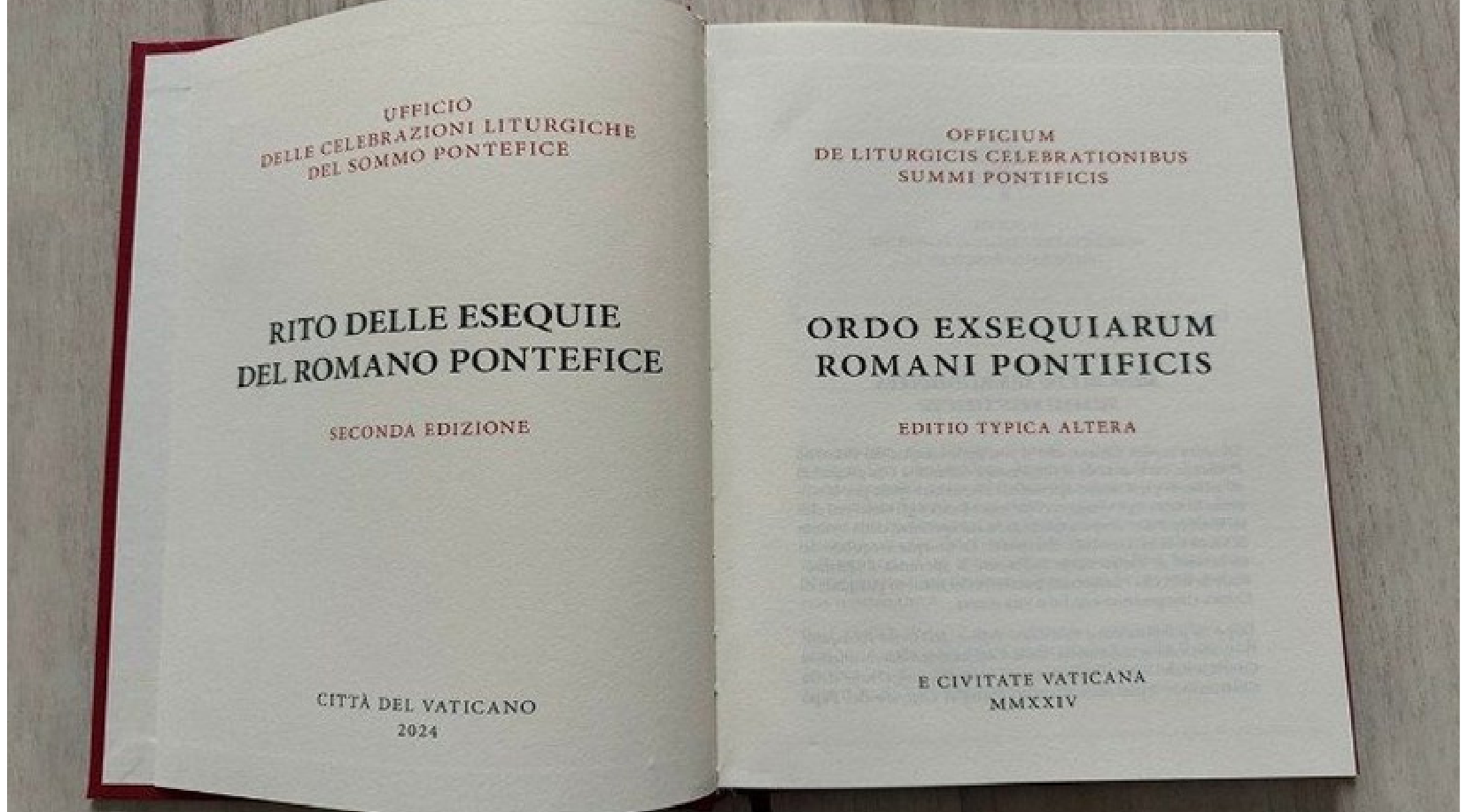(ZENIT News / Vatican City, 11.21.2024).- The Vatican has released the second edition of the Ordo Exsequiarum Romani Pontificis, a liturgical book detailing the rites for the funeral of a Pope. Approved by Pope Francis on April 29, 2024, and officially presented to him on November 4, this revised edition embodies significant updates designed to reflect contemporary theological and pastoral sensibilities while maintaining continuity with tradition.
A Simpler, More Pastoral Vision
Archbishop Diego Ravelli, Master of Pontifical Liturgical Celebrations, explained that the revisions aim to simplify and modernize the liturgy to better express the Church’s faith in Christ’s resurrection. “The funeral of the Roman Pontiff should highlight his role as a shepherd and disciple of Christ, not as a figure of worldly power,” he stated.
Notable changes include the removal of the traditional three-coffin system—previously composed of cypress, lead, and oak—and the immediate placement of the Pope’s body into a single coffin. The deceased Pope will now lie in repose for veneration within this coffin, rather than atop a bier.
Further, the confirmation of death, a ritual once performed in the Pope’s private chamber, will now take place in his chapel. The updated rites emphasize the spiritual nature of the occasion, moving away from overly ceremonial elements toward a focus on the Pope’s pastoral and apostolic mission.
Streamlining the “Three Stations”
The funeral rites retain their traditional structure of three stations: the Pope’s residence, St. Peter’s Basilica, and the burial site. However, each has been refined:
- First Station (Residence): The body is placed directly into a coffin at the chapel following the confirmation of death, eliminating a previous intermediary step at the Apostolic Palace.
- Second Station (Basilica): The coffin is closed the evening before the funeral Mass, which takes place in St. Peter’s Basilica. During public veneration, the body will be displayed within the open coffin, aligning with practices for diocesan bishops as outlined in the Caeremoniale Episcoporum.
- Third Station (Burial): A single-coffin burial simplifies this stage, eschewing the traditional layering of coffins. Additionally, the rites now accommodate burial sites outside the Vatican Basilica.
A Refined Liturgical Text
The updated Ordo underwent a comprehensive revision of its biblical, liturgical, and rubrical texts. Latin prayers were harmonized with the Missale Romanum (2008) and the Nova Vulgata translation, while the Italian version aligns with the Missale Romanum (2020).
Musical annotations were removed to allow greater flexibility, though references to the Graduale Romanum guide the selection of Gregorian chants. Adjustments were also made to the Litany of Saints, sung during two key moments: the body’s transfer to the basilica and the conclusion of the funeral Mass. The revised Litany includes all saints celebrated in the Church’s General Calendar, with a particular focus on saintly Popes.
The Novendiales: Nine Days of Mourning
A dedicated chapter addresses the Novendiales, the nine days of Masses for the deceased Pope that follow the funeral. This edition expands the number of liturgical formularies from three to four, drawing on prayers for deceased Popes and bishops found in the Missale Romanum.
Unlike its predecessor, the new edition excludes lectionary texts, providing only scriptural references. The omission of supplementary materials, such as Gregorian chant notations, reflects the Vatican’s intent to create a more focused, user-friendly volume.
A Bridge Between Tradition and Renewal
The new edition reflects the Vatican’s commitment to adapting the papal funeral liturgy to contemporary needs while preserving its rich historical roots. By emphasizing the Pope’s role as a servant of Christ and simplifying complex rituals, the Church seeks to present a more accessible and spiritually resonant celebration.
As Archbishop Ravelli noted, “This is not merely a liturgical book but an essential tool to prepare and celebrate the funeral of the disciple of Christ chosen as Peter’s successor.”
Thank you for reading our content. If you would like to receive ZENIT’s daily e-mail news, you can subscribe for free through this link.



